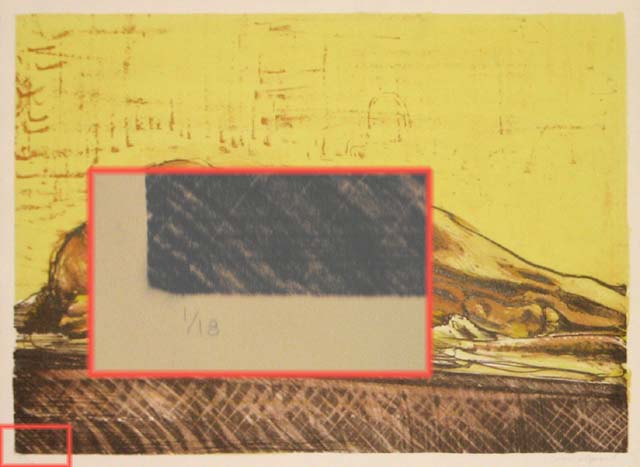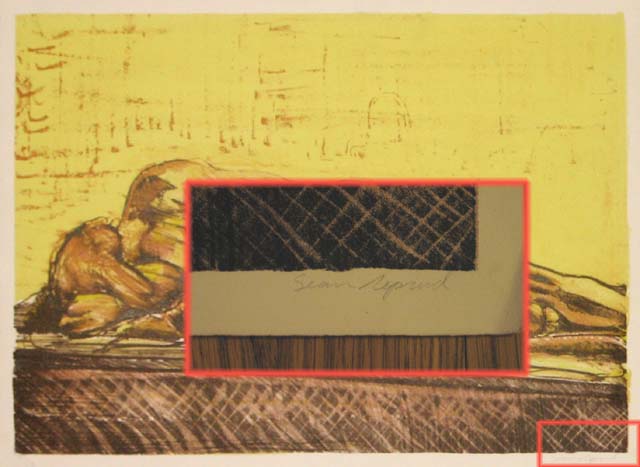The word “print” can mean a couple different things. It is frustrating to me when I tell people that I make prints and they misunderstand, and I think it has led to a fair bit of confusion for the average art connoisseur.
A “print” can be:
- A hand created and printed piece of artwork, created either as a monotype, relief print, intaglio, or lithograph
- A high quality reproduction of a work of art using photographic and mechanical means. These are also sometimes called “lithograph”
- A poster
I’m going to go a little in depth into each one and explain the difference.
Handprinted Art Prints
These types of prints are drawn on the printing element by hand, inked by hand, and hand printed or run through a manual printing press. The main methods used to print these types of prints are monotype, relief (ie. woodblock), Intaglio (or etching), and lithography. Silkscreen can be included in this list, though silkscreen seems to be more widely used for craft rather than art.
Each print made by these methods is an original work of art. In fact, there is no “original” to speak of, because no image is being reproduced. The image is being produced for the first time with the printing elements (the plates, block, stones, etc), it is just being produced a number of times.
When people refer to Fine Art Printmaking, it is this type of printmaking that they refer to. Since these prints are original art, these types of prints maintain and increase in value over time. These are the type of prints that investors and collectors purchase.
This type of Printmade Fine Art is the type of prints that I make and sell here on BDD.
High Quality Reproductions
These type of prints are often referred to as a “limited edition Lithograph” or a Giclée print. These are high quality reproductions of an original work of art. The original art is created, and then photographic and mechanical methods are used to reproduce it.
These prints will often be signed and numbered, and issued as a limited set, so these can be easily confused with Printmade Art prints. This gets more confusing because these are often referred to as “lithographs”. The tricky thing about this language is that pretty much everything is a lithograph. Newspapers and magazines are lithographs, they are just produced by industrial lithography, rather than hand-printed lithography.
These types of lithographs are not hand printed in the fine art sense, though there may be an operator working the printing press.
Sometimes these will be called Giclée prints. Giclée is essentially a really fancy ink jet printer. (And I mean really fancy. I’ve seen Giclée printer produce prints, and they look mighty nice.
Though these types of prints are often limited editions, they do not hold and increase their value as well as original printmade art. They may maintain some value, and increase in value, depending on the artist and the work, but they won’t be an investment like a hand printed art print.
Posters
We all know about these kind of prints. These are the type that we hung in our college dorm room, to show off our appreciation for Van Gogh or Monet. These are the type of print that you will get at Museum gift shops or stores that sell art prints.
These prints are a great way to be able to look at your favorite work of art. Certainly, I know that I won’t ever own a Manet or Renoir painting, so this type of poster would be the appropriate way to have this art in my apartment.
These types of prints are not signed and numbered. They are mass produced, and are a consumable good. They are pretty, but they are not original art.


